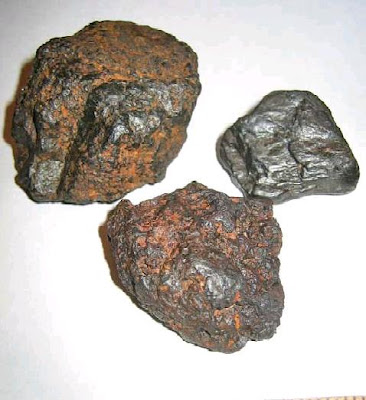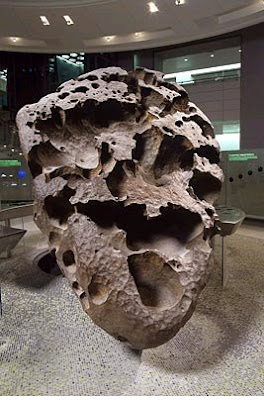
More than 3,000 meteorites land on Earth every year. Most fall in the sea, but a handful are seen to fall on the land.

The fragmentation of the meteorite causes a visual effect called a shooting star.


There are atleast three main types of meteorites: stony, iron, or stony-iron.
The stony meteorites contain silicate minerals.They are subdivided into Chondrites and Achondrites meteorites

The Hoba meteorite, the largest in the world was found in Nambia in 1920. It measures 2.73x 2.43 and is 82 percent iron and 16 percent nickel. It weighs more than 60 tonnes.
 Hoba Meteorite
Hoba MeteoriteThe Tent, found in Greenland in 1894, originally known by its Eskimos name, as Ahnighito. This meteorite weighs about 57.3 tonnes. One can view this meteorite, it the New York Museum of Natural History.
Large meteorites can form a crater when they strike the Earth.
The collisionof the meteorite compresses and excavates the ground, leaving a crater.

The Popigai crater in Siberia, Russia is the fourth largest impact crater on the earth.

Popigai, Russia
Today about 150 impact craters can be identified including the Wolfe Crater of Australia.
















1 comment:
can meteorites be sold for money??
Post a Comment